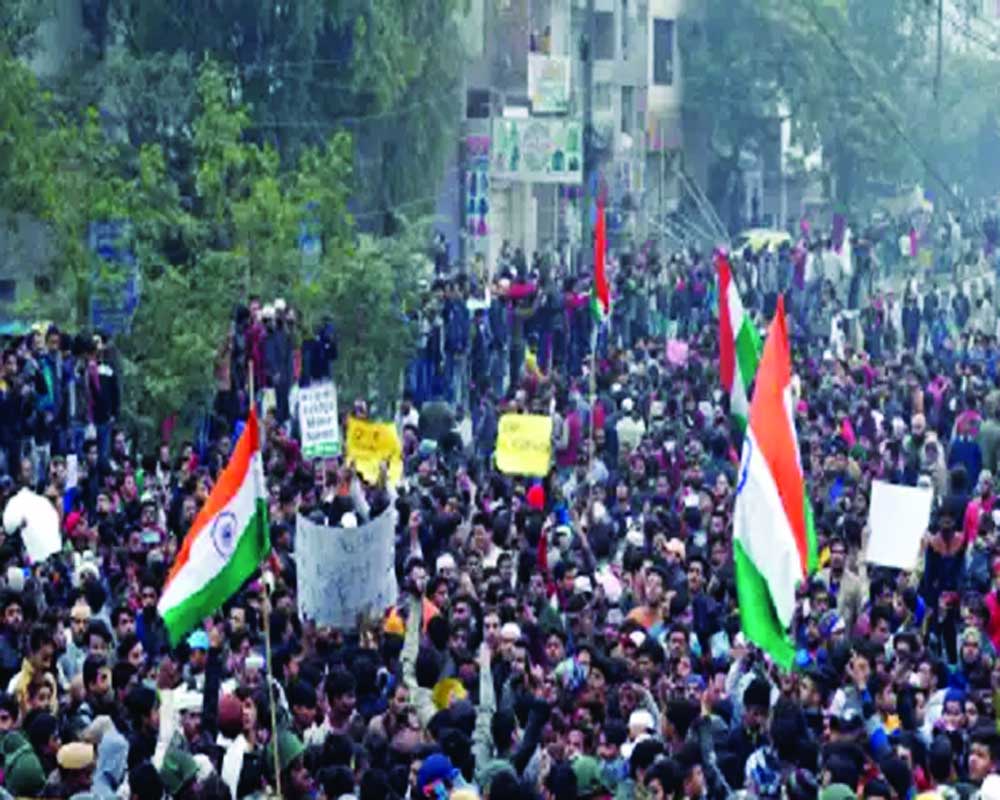What started as a mass movement may fizzle out as an unruly, sporadic mob sans lofty ideals, a steady direction or credible leadership
As 2019 drew to a close, India came perilously close to becoming a volcano, threatening to erupt any moment but stopped just short of accumulating the necessary amount of steam. This has happened earlier, too, notably during the Mandal protests of 1989-90. Those with longer memories would recall the earlier Angrezi Hatao campaign engineered by Socialists such as Ram Manohar Lohia as well as Bengal Leftists, mostly rebels without a cause or pause but with oodles of raw vocal power and ideas, since stone-pelting power had not flowed into the hands of callow youth of that generation.
But most such agitations petered out without leaving a lasting impact and Angrezi continued its domination over the higher echelons of academia and babudom. Between the 1980s, 1990s and 2019, Indian students were mostly driven by ideologies, particularly Right-wing, such as Ram Mandir, or became self-seeking careerists, eschewing old, liberal, socialist ideals. Bohemian lifestyles made way for exam orientation, pursuit of the green card and worship of Lakshmi over Saraswati even in university campuses. Sartre and Camus were passé, Althusser was relegated to the dustbin; only Ayn Rand survived furtively as an icon of self-serving materialism. Progressively, the tacky but animated Indian Coffee House wheezed to a smoke-asphyxiated death. A celebrated Bengali song by Manna Dey (Coffee Houseer shei addata aaj aar nei), vividly encompasses the painful transition to today’s soulless times.
It is not surprising, therefore, that in this cloistered atmosphere, ideological creativity is at a discount and identity politics occupies the front seat. And identity covers virtually every aspect of life — caste, class, religion, language, attire, cuisine, level of education, job aspiration and social standing. That explains why unheard of elements such as Citizenship Amendment Act (CAA) and National Register of Citizens (NRC) assumed such wide recognition nationwide. But assertion of identity cannot be an end in itself. Already the Government seems to have tired out the agitationists and its hired mobs masquerading as intellectuals onto the streets. What started as a self-starting mass movement may soon fizzle out as a ramshackle, unruly, sporadic mob without lofty ideals, a steady direction or credible leadership.
Yes, this could be a collective expression of despair and anger, one which has even drawn out civil society, usually a silent observer, on to the streets. But it needs more than a force of nature to keep it together. It is not enough to just cotton up numbers without a commonality of commitment to keep it going, not enough to revive the literary genre of protest poetry but resort to more convincing ways that work with the common man, good enough to convince them that they can be the David taking on Goliath. That dharma is about the action they take as a worthy people, not meant to be assigned away to self-proclaimed keepers. That they need to rise above the trap of identity politics that the establishment has set, that the surging emotions over religion are no substitute for the slipping development indices that we should be worried about. No idea of India can work till we rework our priorities based on respect and dignity of life, not eroding it.
Most important of all, leadership, singular or collective, will have to be understood as a responsibility of execution than a conflict of egos, something which has already been proven by the failure of the India Against Corruption movement. There are two devils at work, a democratic squandering of ideas and State repression of the militaristic kind. And in a polarised context, there is need for some sort of an organised leadership. Politics cannot be cleansed till we participate in it and that is the only way to reclaim the system. So where does the class of 2019 go from here?
That depends on the direction politics takes in the next couple of years. The euphoria generated by the persona of Prime Minister Narendra Modi and the high noon of the BJP regime is evidently drawing to an end as successive State elections demonstrate. Speculators believe Modi is no easy quitter and won’t retire into the BJP margdarshak mandal in a hurry. But in case he faces a decisive debacle, he may have no option. In that event, India may face another spell of political uncertainty similar to those that followed strong Governments in the past.
Modi’s critics say he has already run a quasi-autocratic regime and people will not approve of another spell of the same. The questions, therefore, are wide open: More democracy or less? In the nation’s interest more is always better than less.
(Writer: Chandan Mitra; Courtesy: The Pioneer)








 OpinionExpress.In
OpinionExpress.In















Comments (0)